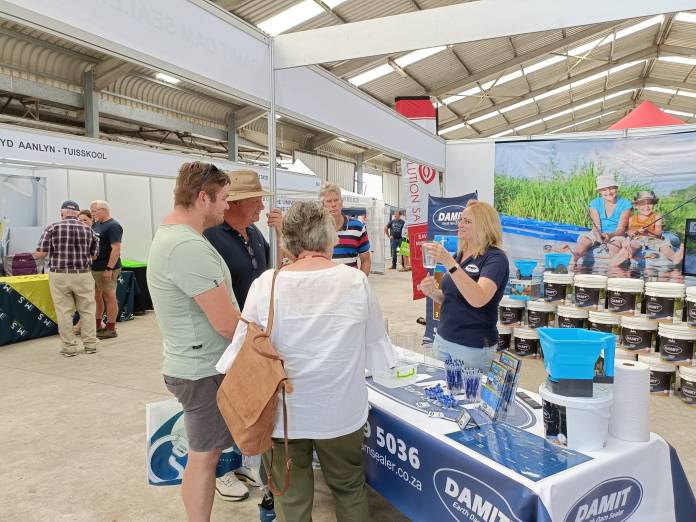The Quest For Electric Motor Independence: Alternatives To Chinese Manufacturing

Table of Contents
Reshoring and Domestic Production
To achieve true Electric Motor Independence, reshoring – bringing manufacturing back to the domestic market – is paramount. This involves a multi-pronged approach focused on incentivizing production and leveraging technological advancements.
Incentivizing Domestic Manufacturing: Governments play a pivotal role in stimulating domestic electric motor production. Strategic policy interventions, such as tax breaks, subsidies, and streamlined regulatory processes, can significantly lower the barrier to entry for domestic manufacturers.
- Examples: Successful reshoring initiatives in other industries, like pharmaceuticals and semiconductors, demonstrate the effectiveness of targeted government support.
- Benefits: Reshoring creates high-skilled jobs, boosts economic growth, enhances national security, and reduces reliance on foreign suppliers.
- Challenges: Higher labor costs in developed nations and the need for significant infrastructure investments are key hurdles that require careful consideration and strategic planning.
Investing in Automation and Robotics: Automation is crucial for making domestic electric motor manufacturing competitive. By leveraging robotics and advanced manufacturing technologies, companies can offset higher labor costs, improve efficiency, and enhance overall productivity.
- Automation Technologies: Robotics, AI-powered quality control systems, and automated assembly lines can drastically streamline electric motor production.
- Cost-Benefit Analysis: While initial investments in automation are substantial, the long-term benefits, including reduced labor costs, higher output, and improved quality, often outweigh the initial expenses.
- Impact on Employment: While automation may displace some low-skilled jobs, it also creates high-skilled positions in areas like robotics engineering, software development, and maintenance.
Nearshoring and Regional Partnerships
While reshoring is vital, establishing regional partnerships through nearshoring offers a complementary approach to achieve Electric Motor Independence. This involves relocating manufacturing to nearby countries with favorable conditions.
Exploring Opportunities in Southeast Asia: Countries like Vietnam, Thailand, and Mexico offer attractive options for electric motor production due to lower labor costs and proximity to key markets.
- Advantages: Lower labor costs compared to developed nations, access to a growing skilled workforce, and proximity to significant consumer markets.
- Disadvantages: Infrastructure limitations in some areas, potential political risks, and the need for careful due diligence in selecting suitable locations.
- Examples: Several companies are already establishing manufacturing facilities in these regions, demonstrating the viability of this approach.
Strengthening Trade Alliances: Fortifying trade agreements and fostering stronger collaborations with reliable partners is essential to secure a stable supply of electric motors.
- Regional Trade Blocs: Participation in regional trade blocs can reduce tariffs, simplify regulatory processes, and create a more predictable business environment.
- International Regulations: Navigating complex international regulations and standards requires careful planning and collaboration with legal experts.
- International Organizations: Organizations like the WTO can play a significant role in facilitating international trade and resolving trade disputes.
Technological Innovation and Diversification
Securing Electric Motor Independence also necessitates a strong focus on technological innovation and diversification of materials and manufacturing processes.
Investing in R&D for Advanced Motor Technologies: Significant investment in research and development (R&D) is essential to create more efficient and sustainable electric motor designs.
- Cutting-Edge Technologies: Advances in motor design, materials science, and control systems are crucial for improving efficiency, reducing reliance on rare earth elements, and enhancing performance.
- Increased Efficiency: Innovations can lead to significant improvements in energy efficiency, reducing operating costs and minimizing environmental impact.
- Government Funding: Government funding for R&D in electric motor technology can accelerate innovation and create a competitive advantage for domestic manufacturers.
Exploring Alternative Materials and Manufacturing Processes: Reducing reliance on specific materials and exploring alternative manufacturing methods is critical for building a resilient supply chain.
- Alternative Materials: The use of recycled materials, bio-based materials, and readily available materials reduces dependence on specific sources.
- Additive Manufacturing (3D Printing): 3D printing offers the potential to revolutionize electric motor production, enabling customized designs, reduced waste, and on-demand manufacturing.
- Supply Chain Resilience: Diversifying materials and manufacturing processes significantly strengthens the overall resilience of the electric motor supply chain.
Conclusion
Achieving Electric Motor Independence requires a multifaceted strategy encompassing reshoring, nearshoring, technological innovation, and strategic partnerships. By incentivizing domestic production, investing in automation, strengthening trade alliances, and fostering R&D, nations can significantly reduce their reliance on single-source manufacturing and build a more secure and sustainable future for their electric motor supply chains. Secure your electric motor independence by exploring alternatives to Chinese manufacturing and investing in a resilient electric motor supply chain. Learn more about government initiatives and industry best practices to contribute to this crucial national effort.

 Zayavlenie Makrona Usilenie Davleniya Na Rossiyu Iz Za Ukrainy
Zayavlenie Makrona Usilenie Davleniya Na Rossiyu Iz Za Ukrainy
 Dari Sampah Menjadi Harta Cangkang Telur Sebagai Sumber Kalsium Untuk Pertanian Dan Peternakan
Dari Sampah Menjadi Harta Cangkang Telur Sebagai Sumber Kalsium Untuk Pertanian Dan Peternakan
 Russell Westbrooks Birthday Serenade For Nikola Jokic Nuggets Heartwarming Moment
Russell Westbrooks Birthday Serenade For Nikola Jokic Nuggets Heartwarming Moment
 Mlb Tokyo Series Live Stream The Chicago Cubs Vs Los Angeles Dodgers
Mlb Tokyo Series Live Stream The Chicago Cubs Vs Los Angeles Dodgers
 Oskar 2024 I Entasi Metaksy Emma Stone Kai Margaret Qualley Ti Apokalypse I Analysi Xeilion
Oskar 2024 I Entasi Metaksy Emma Stone Kai Margaret Qualley Ti Apokalypse I Analysi Xeilion
